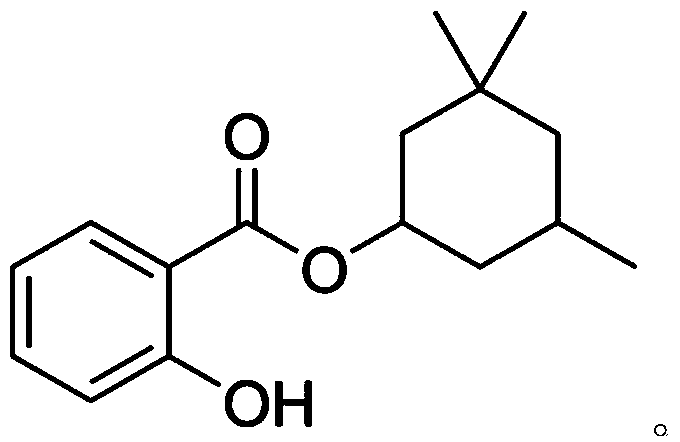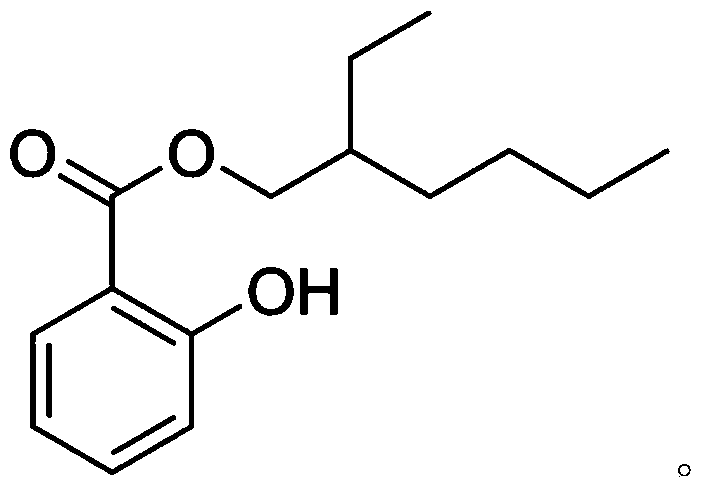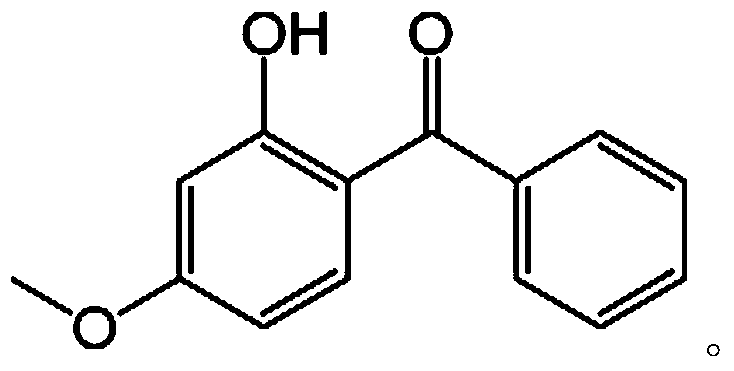Sunscreen formulations
A technology of absorbent and stabilizer, which is applied in the field of silicon dioxide and sunscreen compositions, and can solve the problems of sunscreen instability and collagen fiber damage
- Summary
- Abstract
- Description
- Claims
- Application Information
AI Technical Summary
Problems solved by technology
Method used
Image
Examples
Embodiment 1
[0099] (test carrier)
[0100] Tables 1 and 2 describe typical skin test formulations in which sunscreens, solubilizers and stabilizers may be incorporated to determine the efficacy and stability of the compositions in protecting the skin from UVA and UVB.
[0101] Table 1 *
[0102] Element
Concentration (by weight)%
Phase A
water
Appropriate amount
0.1
M-benzoate
0.15
P-benzoate
0.1
0.1
Phase B
4.0
Glyceryl Stearate+PEG100
4.0
4.0
1.0
0.2
Phase C **
active substance
base on needs
total
100
[0103] * Procedure for preparing the composition: Sprinkle xanthan gum into water and mix for 10 minutes. Then, add all ingredients in Phase A and heat to 70 to 75°C. Add all items in Phase B to a ...
Embodiment 2
[0112] (sample preparation)
[0113] The compositions in Tables 3 and 4 are sample formulations that were found to be particularly effective in providing broad-band protection from UVA and UVB radiation. For example, the formulation of Table 3 was determined to have an SPF value of about 35 and a PVA value of at least 8, thereby classifying it as a PA+++ sunscreen product. In fact, this formulation falls within the protective range of a 3:1 ratio of UVB to UVA. For the formulation of Table 4, it was found to have an SPF value of about 50 and a PVA value of at least 8, thereby classifying it as a PA+++ sunscreen product. Additional testing confirmed that the formulations of Tables 3-4 are emulsions with long-term stability (i.e., the solubility of the sunscreen in the composition can be stored for 1 year at room temperature / about 20 to 25°C), as measured by standard thermal stability tests determined.
[0114] table 3 *
[0115] Element
Concentration (by weig...
Embodiment 3
[0123] (additional analysis)
[0124] Compositions of the invention, such as those disclosed in Tables 1 to 4, can be assayed to determine the ability of such compositions to treat other skin-related conditions.
[0125] Erythema Assay: An assay that measures reduction in skin redness can be assessed using the Minolta Chromometer. Skin erythema can be induced by applying a 0.2% sodium lauryl sulfate solution to the subject's forearm. The area is protected for 24 hours with an occlusive patch. After 24 hours, the patch is removed and a Minolta Chroma Meter can be used * Values were evaluated for irritation-induced redness. a * The value measures the change in skin tone in the red area. Immediately after the measurement, the area is treated with the composition of the invention. Repeat measurements are taken periodically to determine the ability of the formulation to reduce redness and irritation.
[0126] Skin Moisture / Hydration Analysis: The benefits of skin moisture / ...
PUM
 Login to View More
Login to View More Abstract
Description
Claims
Application Information
 Login to View More
Login to View More - R&D
- Intellectual Property
- Life Sciences
- Materials
- Tech Scout
- Unparalleled Data Quality
- Higher Quality Content
- 60% Fewer Hallucinations
Browse by: Latest US Patents, China's latest patents, Technical Efficacy Thesaurus, Application Domain, Technology Topic, Popular Technical Reports.
© 2025 PatSnap. All rights reserved.Legal|Privacy policy|Modern Slavery Act Transparency Statement|Sitemap|About US| Contact US: help@patsnap.com



